Protecting
What Matters
Through the preservation of our public lands and the stories that are tied to these places, NPF protects the very things that draw us to national parks – their natural wonders and compelling histories. Together with our partners, NPF helps parks protect their landscapes and the wildlife that call them home, share and amplify a more comprehensive history of our parks and world, reduce their environmental impact to further protect resources, and undertake innovative projects that shape the way we experience and think about national parks in the future.
By the Numbers
-
3,737
acres of invasive vegetation removed
-
34
at-risk or listed species protected
-
21,345
acres of land transferred to NPS
Landscape & Wildlife Conservation
NPF’s landscape and wildlife conservation projects protect delicate park lands and the species that call them home.
Restoring Shorelines
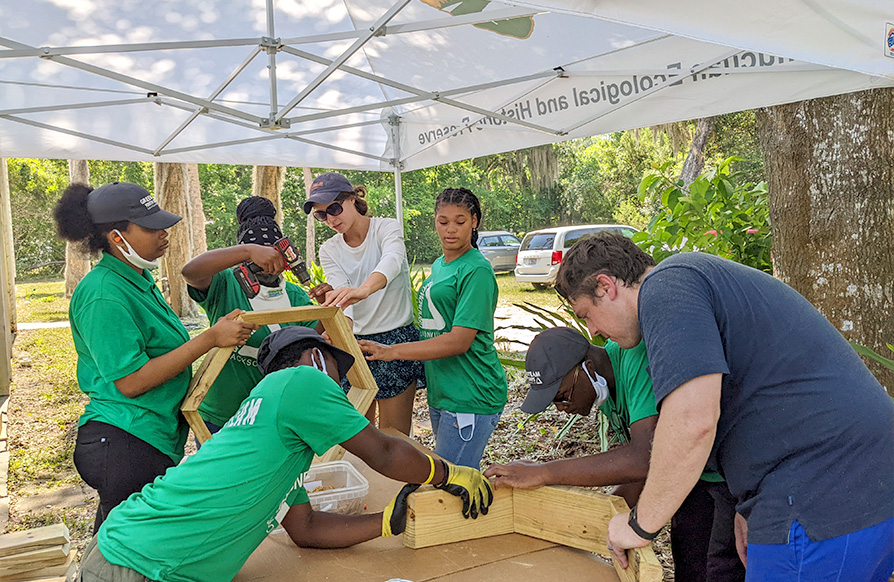
Photo: Groundwork Jacksonville
Just 20 minutes from Jacksonville, Florida lies Timucuan Ecological and Historic Preserve, one of the last unspoiled coastal wetlands on the Atlantic Coast. An increase in park visitation and increasingly strong storms caused the park’s shorelines to become fragile. With funding from NPF and Stericycle, a group of park rangers, scientists, and students are using oyster shells to restore the park’s shorelines and the habitat of three Species of Greatest Conservation Need: scalloped hammerheads, sandbar sharks, and American oystercatchers.
Reintroducing the California Condor
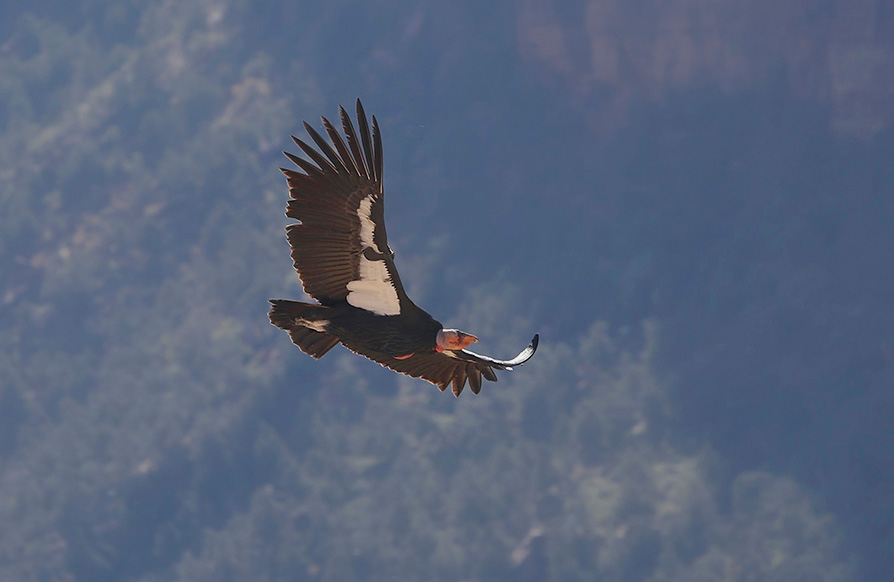
Photo: Nancy Strohm / iStock
In summer 2022, NPF celebrated the reintroduction of California condors – North America’s largest land bird – to their historic range in Redwood National and State Parks, within the Yurok ancestral territory. The project, led by the Yurok Tribe and in collaboration with the Northern California Condor Restoration Program, helped support the reintroduction of the critically endangered species to their historic range within the park and Yurok territory. Called prey-go-neesh in the Yurok language, the condor is sacred and plays a key role in the tribe’s origin story and ongoing world renewal ceremonies.
Growing Beyond the Boundary
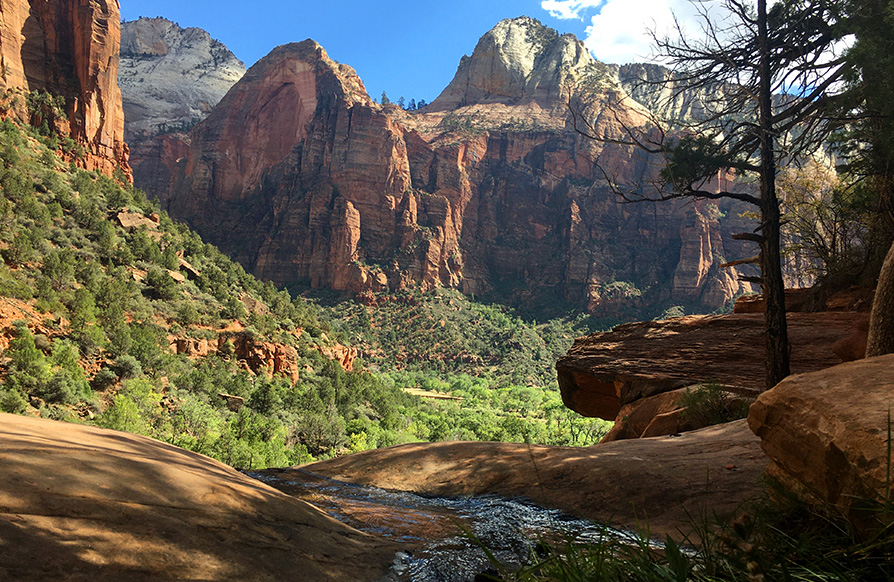
Photo: Maria_Ermolova / iStock
Thanks to support from NPF and the George S. and Dolores Doré Eccles Foundation, leveraged with state and private donations, as well as a land value donation from the McLaws family, Zion National Park Forever Project purchased an easement on 37.7 acres of land outside Zion National Park’s eastern boundary as part of a larger initiative to create an eastern gateway for the park. This means that this vulnerable land will be protected from development, while creating recreational opportunities and providing much-needed relief from overcrowding in other areas of the park. NPF also supported the construction of a 24.5-mile section of the East Zion Mountain Bike Trail System, which establishes a world-class recreational experience on the new eastern gateway.
Doubling the Size of a Park

Photo: NPS Photo
An NPF grant to the Ocmulgee National Park and Preserve Initiative helped to more than double the size of Ocmulgee Mounds National Historical Park, located in Macon, Georgia, protecting the natural wonders of the Ocmulgee River and floodplain. This NPS site preserves the homelands of the Muscogee (Creek) Nation and tells the story of 17,000 years of continuous human habitation. Thanks to a collaboration between NPS, NPF, tribal partners, and nonprofit partners, this acquisition is just one piece of a larger effort to add privately-owned land to the park and to protect and steward important cultural and natural resources.
History & Culture
By supporting the rehabilitation of historic sites and the preservation of irreplaceable artifacts, as well as research that amplifies more comprehensive perspectives and experiences, NPF helps parks elevate stories of America’s rich diversity.
Expanding Humanities Research
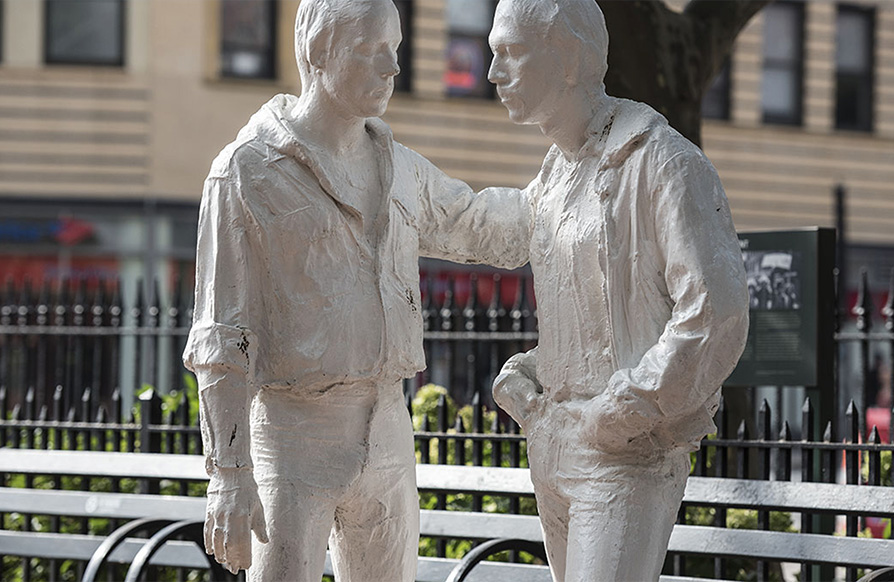
Photo: NPS Photo
The Mellon Foundation granted NPF over $13 million to provide funding for 30 new humanities postdoctoral fellowships in national parks across the country. An expansion of the NPS Mellon Humanities Fellowship program, the new cohort of Fellows will begin their work in the fall of 2023. From expanding understanding of the impact and legacy of people of African descent during the revolutionary period to documenting punk and go-go music in Washington, D.C., the Fellows will explore new facets of park history and help parks share those stories with visitors.
Highlighting Indigenous Voices at Yellowstone

Photo: Ashton Hooker / NPS
Funding from NPF enabled Indigenous scholars and artists to produce new art installations at Yellowstone National Park, coinciding with the park’s 150th anniversary. Several tribal nations and organizations partnered to install the All Nations Teepee Village, with teepee lodges and signs to represent the 27 affiliated tribal nations of the Yellowstone area. Teepee Village provided an immersive and tactile experience for visitors and a new way for the park to highlight Indigenous history and presence, as well as strengthen its relationship with tribal communities.
Empowering Students to Share Local History
Washington, D.C.’s Shaw neighborhood is home to several meaningful historic sites, including Carter G. Woodson Home National Historic Site and Mary McLeod Bethune Council House National Historic Site. Through funding from NPF, local middle and high school students were educated on the histories and significance of these places and trained to act as NPS docents at the sites, helping share these important stories with visitors. The students also traveled to civil rights sites in the South as part of their educational experience, and were encouraged to reflect on the contemporary relevance of these NPS sites through a documentary that will feature their time with the program.
Researching Women’s History
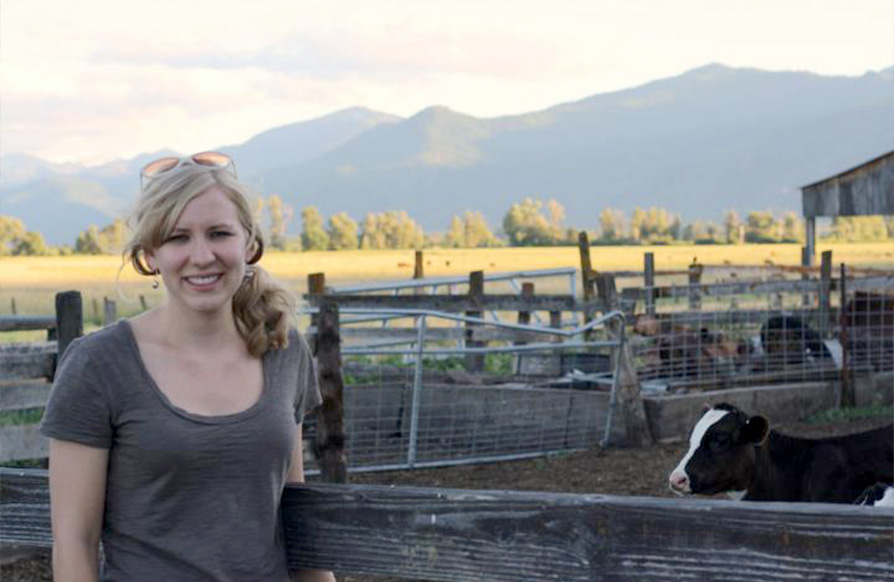
Photo: Dr. Nicole Martin
As part of NPF’s Women in Parks program, a postdoctoral fellow is conducting research around women’s stories tied to parks in the Pacific West region. Dr. Nicole Martin’s research covers stories with connections to over 50 national park sites, amplifying the work and legacy of women who were involved in the early advocacy of public parks, conservation, and science. Dr. Martin’s research and collaborations with park interpretive staff will culminate in a new online exhibition centered on ideas of home and homelands.
Resilience & Sustainability
NPF’s resilience and sustainability projects help parks reduce their environmental impact and further protect their resources.
Reducing Waste in Yosemite

Photo: Tina Moseley
I love waste diversion because it's tangible. We see and touch it every day. It makes you really connect with what we can do as individuals. And we have the opportunity to make real change.
Continuing its longstanding partnership with Subaru of America to reduce waste in our national parks, NPF funding expanded Yosemite National Park’s composting and fuel cylinder recycling program. At Yosemite, Tina Moseley leads the charge – overseeing the installations of four new composting bins added in 2022, leading composting demonstrations and installations at local schools, and managing volunteer recycling days. The impact, they hope, will help both Yosemite and the gateway communities surrounding the 750,000+ acre park.
Paving the Way for Solar Power
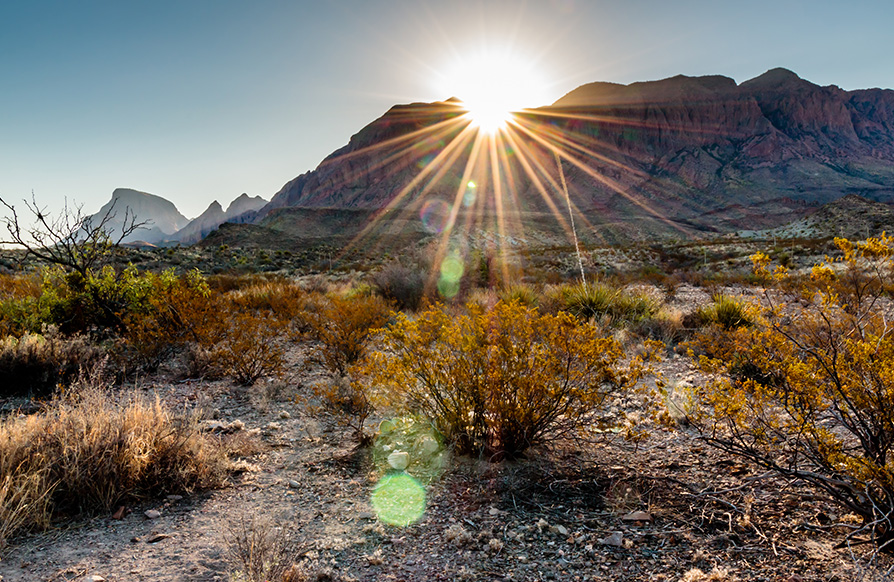
Photo: B Norris / Shutterstock
As a remote park, Big Bend National Park is using its abundant sunshine to help power its Panther Junction Visitor Center. In 2022, an NPF grant helped the park design shade structures to protect the parking areas around the visitor center and the park’s administrative offices. These shade structures will then allow the park to install a 42-kilowatt solar panel array, which, when completed, will supply 100% of the electrical needs of the park’s main visitor center.
Installing Water Refill Stations

Photo: Daniel Mayer (Mav) / WikiMedia Commons
By increasing its number of water refill stations, Petroglyph National Monument is decreasing its impact on local landfills. With Hydro Flask and NPF funding, the park installed water refill stations at its visitor center. The water refill stations provide visitors a place to refill their own water bottles – reducing waste in the park while promoting hydration.
Parks of the Future
By supporting innovative projects that reimagine and enhance the way we experience our parks, NPF is helping shape the visitor experience at parks of the future.
Enriching the Cultural Experience
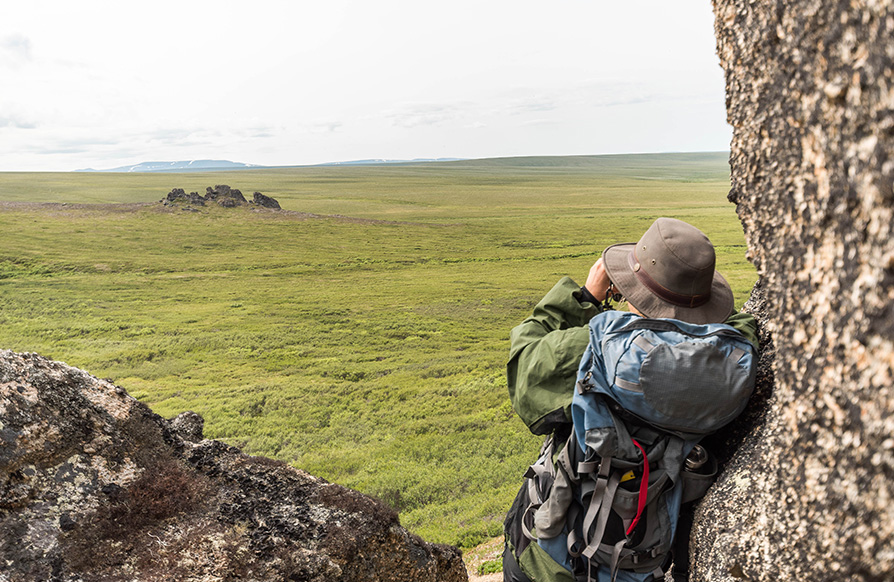
Photo: NPS Photo
This is a wonderful opportunity for tribes and the National Park Service to co-create the visitor experience.
Thanks to the generous support of The Leona M. and Harry B. Helmsley Charitable Trust, NPF will grant more than $4.4 million to support the renovation of the existing visitor center and outdoor area at Bering Land Bridge National Preserve. The project will create a welcoming and inclusive space to share culturally relevant content through exhibits and digital media in collaboration with Sitnasuak Native Corporation and affiliated tribes.
Designing Accessible Exhibits

Photo: Toshe_O / iStock
Monocacy National Battlefield in Maryland encompasses several centuries of history, some of which is preserved by exhibits that do not meet accessibility standards. Through a grant from NPF, the park is designing, fabricating, and installing new museum exhibits – featuring items such as a fiber optic storytelling map and a preserved 19th century flag – that will provide an inclusive experience for all visitors.
Using Data to Improve the Visitor Experience
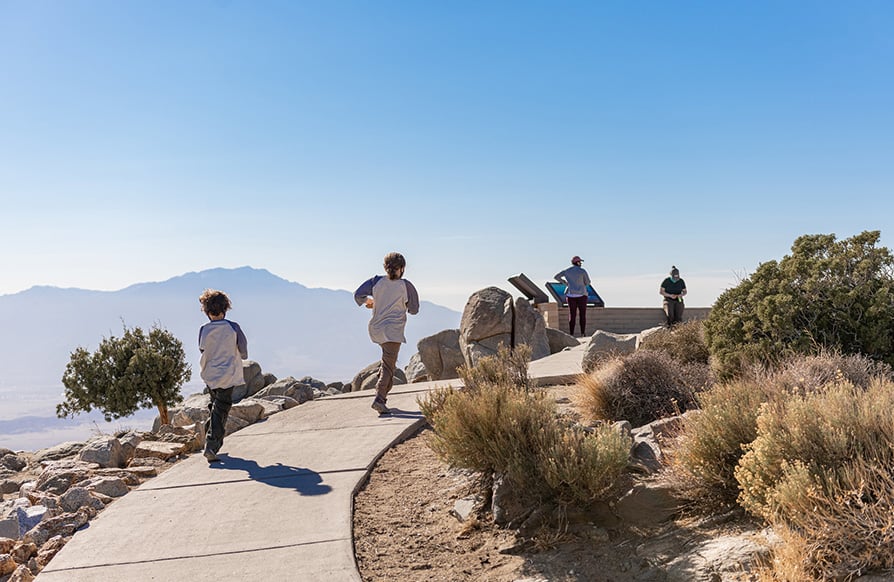
Photo: NPS Photo
Many parks do not have recent – or any! – data about their visitors. Thanks to a $1 million grant from NPF, NPS’s Socioeconomic Monitoring Program (SEM) will be able to provide 24 parks with up-to-date information about their current visitors, including their pre-trip planning efforts, motivations for visiting, trip characteristics, and experiences while in the park. These survey findings will help park managers learn directly from their visitors. At a national level, as more and more parks participate, the SEM Visitor Survey will allow NPS to track trends and perceptions of our parks.
See How We are Making Connections
The National Park Foundation supports programs and projects that protect the natural and cultural resources of our national parks – see the work we're doing to connect people to these treasured places.

